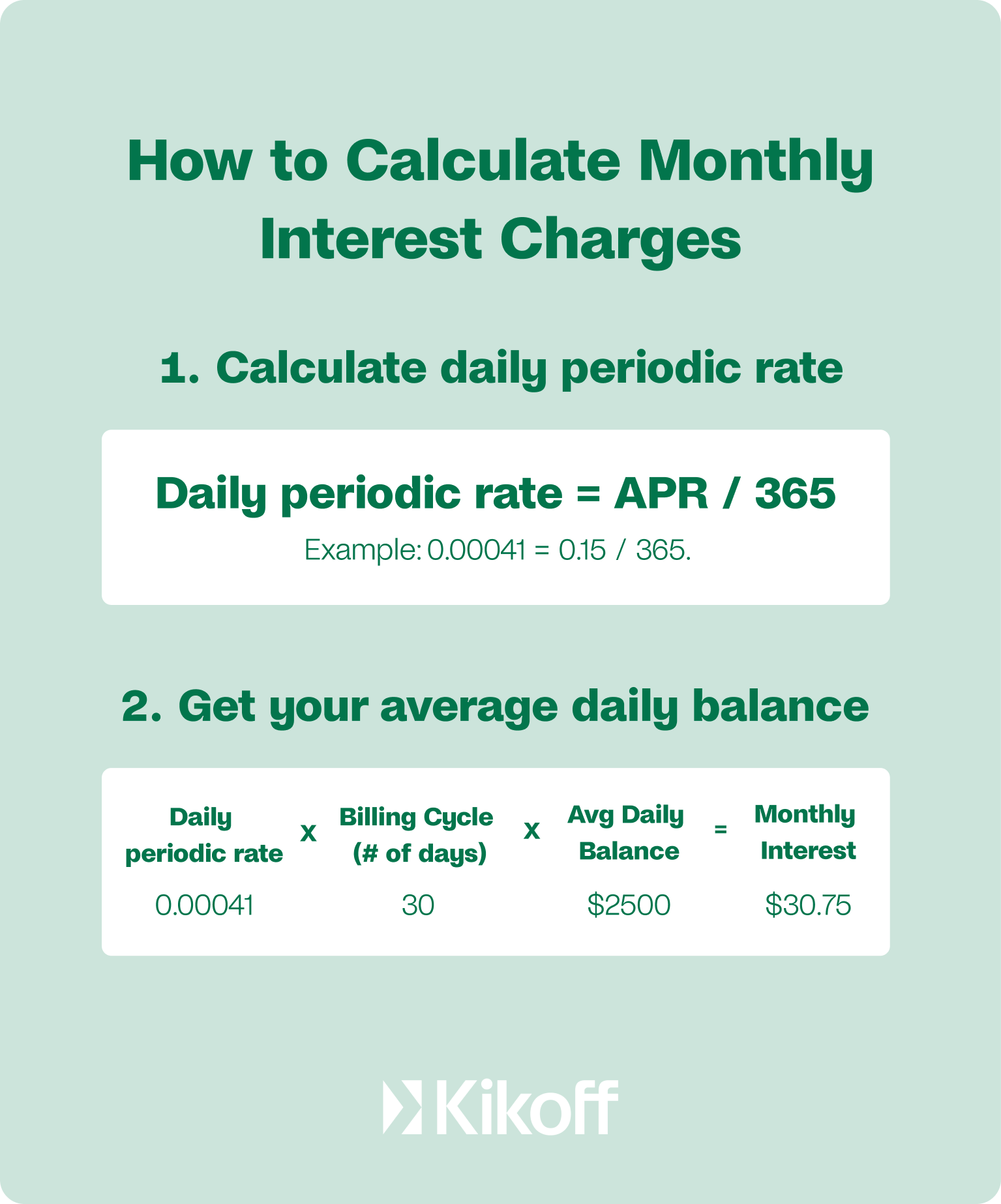If you’re looking to buy a car, buy a home, or get a loan, you’ll need to pay attention to both lenders’ interest rates and APR (annual percentage rate). But what’s the difference? And how do you calculate APR?
| Interest Rate | APR (annual percentage rate) |
| Interest rate is the annual cost of a loan expressed as a % | APR is a fully picture of how much your total costs will be. It’s the annual cost of a loan plus any fees, expressed as a % Fees can include costs like closing costs, mortgage insurance, and more. |
All lenders must disclose their APR. Be wary if they do not! It’s illegal under the Truth in Lending Act. Since all lenders must follow this rule, borrowers like yourself can use APR as a good way to compare different lender loans. .
How to calculate APR

- Calculate daily periodic rate
- Daily periodic rate x Billing Cycle x Avg Daily Balance = Monthly Interest
How to reduce your APR
If your credit score is holding you back from better interest rates, consider credit building apps like Kikoff to help build credit. But here are some more ways to reduce your APR:
- Pay early or on-time: You could reduce your APR by making on-time payments. On-time payments are reported into the credit bureaus and show up on your next credit report. This means your credit score may go up.
- Research other credit lender interest rates: Do a little homework and check the interest rates of other competing lenders. Take note of this and then share with your current lender.
- Negotiate with your lender: You can share with your lender that you’ve been making on-time payments for several years. Be friendly but also don’t be afraid to haggle. Also, we recommend that you don’t up after the first call. Follow up after 6 months of consistent payments.
These are our favorites. But if you want to try some more strategies, visit here.

